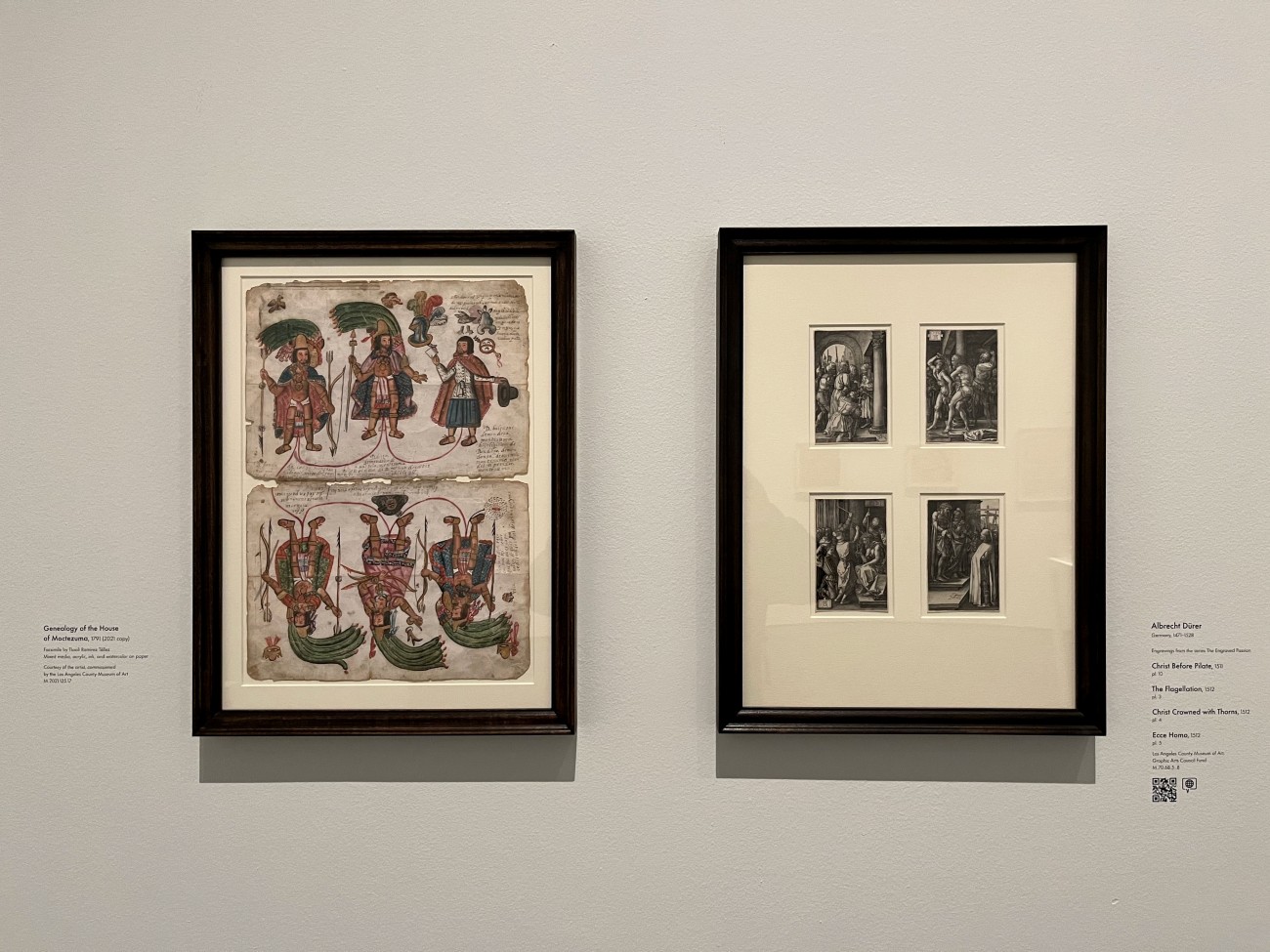
Moctezuma’s Genealogy, Ecce Homo, and Codex Moctezuma
Facsímil moderno del Códice de Moctezuma, siglo XVI
Genealogía de la casa de Moctezuma, 1791 (copia 2021)
Cristo ante Pilato, 1511
La flagelación, 1512
Cristo coronado de espinas, 1512
Ecce homo, 1512
photo © Museum Associates / LACMA
Audio Guide
Early colonial documents reveal how, for elite Nahuas, Moctezuma became a central figure in uniting Mesoamerican and Euro-Christian cosmologies. In one scene of the Codex Moctezuma, which chronicles the final years of the Aztec Empire, a captive Moctezuma is forced to speak before his people; in the scene to the left, he lies mortally wounded, dispossessed of his regalia. The betrayal and assassination of Moctezuma by the Spanish evoked the Passion of Christ, and tlacuiloque drew on imagery like that of Ecce Homo to illustrate a Christlike Moctezuma in his final days. Mexica nobility, who continued to assert their political power through connections to Moctezuma’s lineage, also created visual connections between Moctezuma and Jesus, a new solar deity in Nahua worldview.

